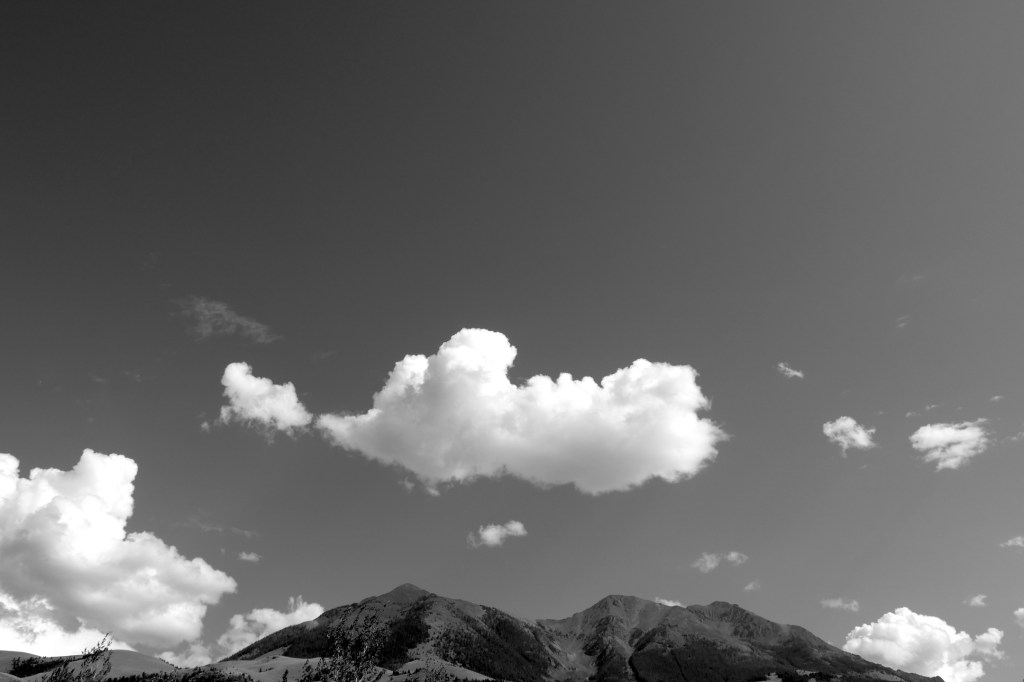
Sitting by the pond behind our borrowed cabin in Montana, I’m reading Where the Crawdads Sing, a bestselling novel by Delia Owens. It’s so bad that I can’t put it down. So unspeakably awful that it’s now a major motion picture starring actors I’ve never heard of.
The Swamp Girl, you see, is the main character. Scorned by the townsfolk, abandoned by her mother, beaten by her drunken ne’er-do-well dad. And then befriended by a saintly Black family. Someone teaches the Swamp Girl to read and, before you know it, she’s a scientist. Authoring celebrated books on crawdads, shells and such. Then the Swamp Girl is accused of murder. Courtroom scenes ensue. When all she ever wanted was love. Did I mention she’s beautiful?
I bought the book by accident (don’t ask), and since our cabin lacks wifi, I’m now irrevocably stuck with it. Plus, I paid good money for the Crawdad book. So, just as I would never throw away a piece of barely edible leftover chicken, I’m going to plod through the whole damn thing.
“I want to know what happens to the Swamp Girl,” I say, just a little too defensively.
I’m gamely chewing on another chapter when a movement catches my eye. I glance up. Eighteen inches from my face, a hummingbird hovers, studying me intently, green iridescent body swinging gently between vibrating wings. Satisfied, the hummingbird zooms off.
Trouble in Paradise
In June of this year, record rains and mudslides washed out the northern road into Yellowstone Park, causing tourism to plummet in Paradise Valley. Visitors can still enter Yellowstone on foot, if they’re accompanied by guides. But if you want to drive in, you have to bypass Paradise Valley and enter the park on the south side, through Wyoming. It’ll take three years to repair the road, which is a big economic blow to businesses in Paradise Valley, especially following the lean years of the pandemic. The town of Gardiner, at the park entrance, is particularly hard-hit. When we visit, it seems empty, bereft.
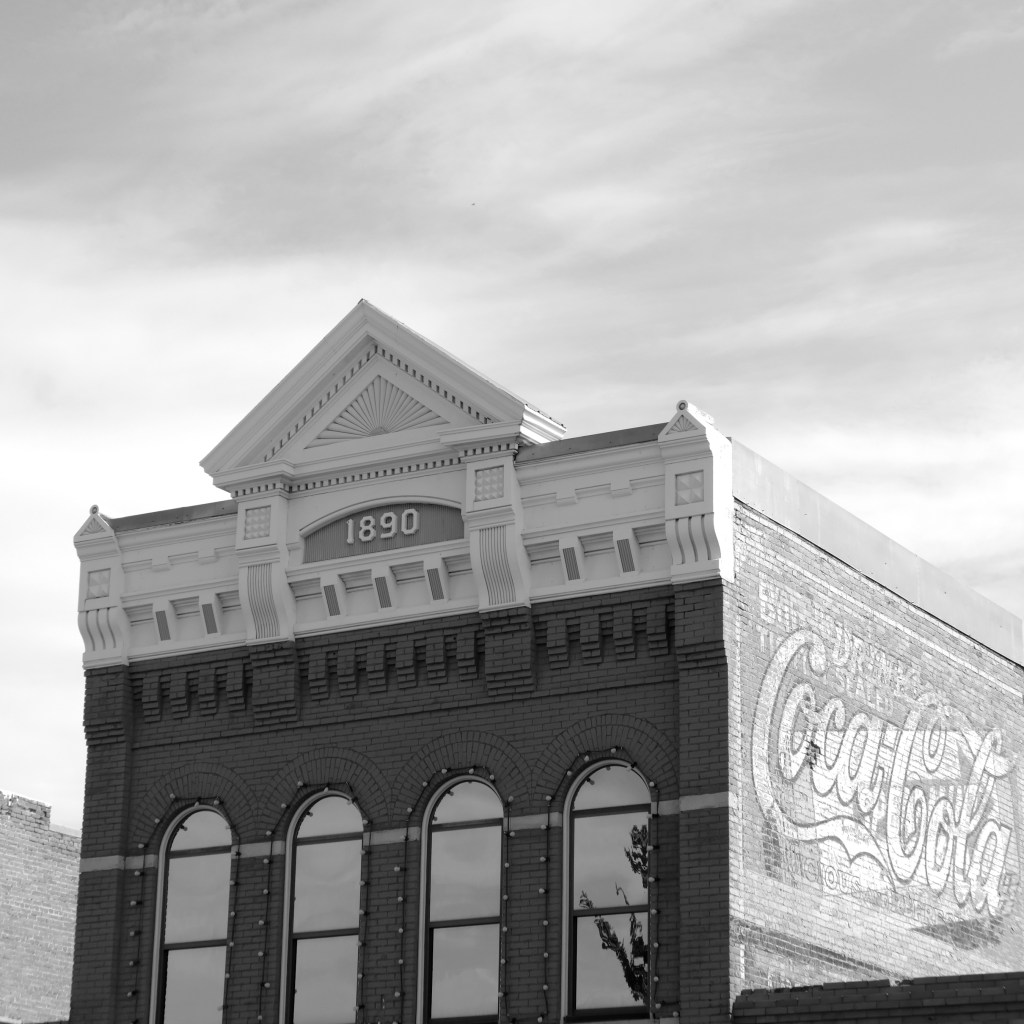
Livingston, you can safely presume
The former rail hub and ranching town of Livingston stands at the other end of Paradise, and we visit one day. Livingston is a handsome town (A River Runs Through It was filmed here). You can easily imagine its heyday: hitching posts in front of freshly-painted buildings, wooden sidewalks, dainty ladies dragging their crinolines over the straw and horseshit as they cross the dirt road.



Icons in Livingston
In a downtown of carefully curated shops, cafes and bars, you won’t find a single fast-food outlet. Except at its very entrance, at Mike’s Beefburger In-and-Out. Mike’s has been here since 1954 (“fast food” entered Merriam’s in 1951), and is open during baseball season, April to October. I wanted to eat there at first sight, but it was Sunday and the place is a shrine, so the lineup was too long.
I returned during the week and was, briefly, the only customer. I ordered a double-patty cheeseburger, fries and a Coke, which I took across the street to a picnic table situated on a patch of grass. I sat and watched the parade of locals drive up and order food, which they mostly ate in their pickups.
Further on, past Main Street, you get to the Teslow, a 75-foot grain elevator, or “prairie skyscraper.” There’s a committee in Livingston dedicated to saving the silo, which would be a good thing.


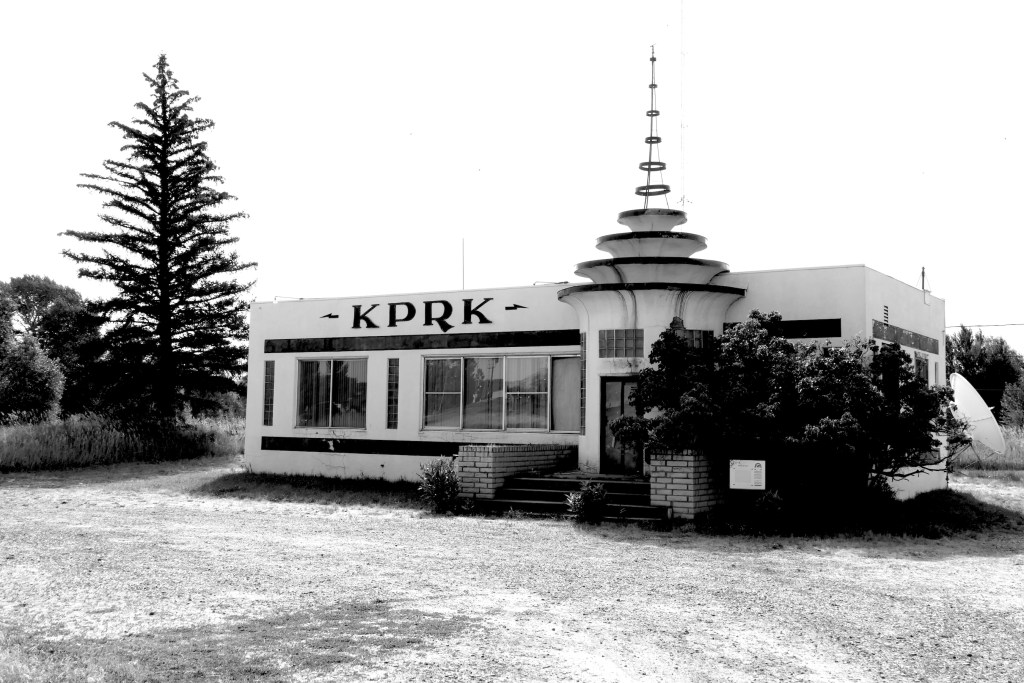
Radio station KPRK, with its spiralling Futurama fake antenna, stands just beyond the Teslow. The station still broadcasts, but not from here.
Another moment of grace
After dinner with some friends in Livingston, we drive the fifty kilometres back to our cabin, along Route 89. In the half hour before dark, colour and depth drain from the Absaroka mountains, reducing them to a high jagged scrim. In the half-light, the mountains flatten to silhouettes: remote, abstract, forbidding. Not so much stone, as the idea of stone. And this, for some reason, chills the heart.
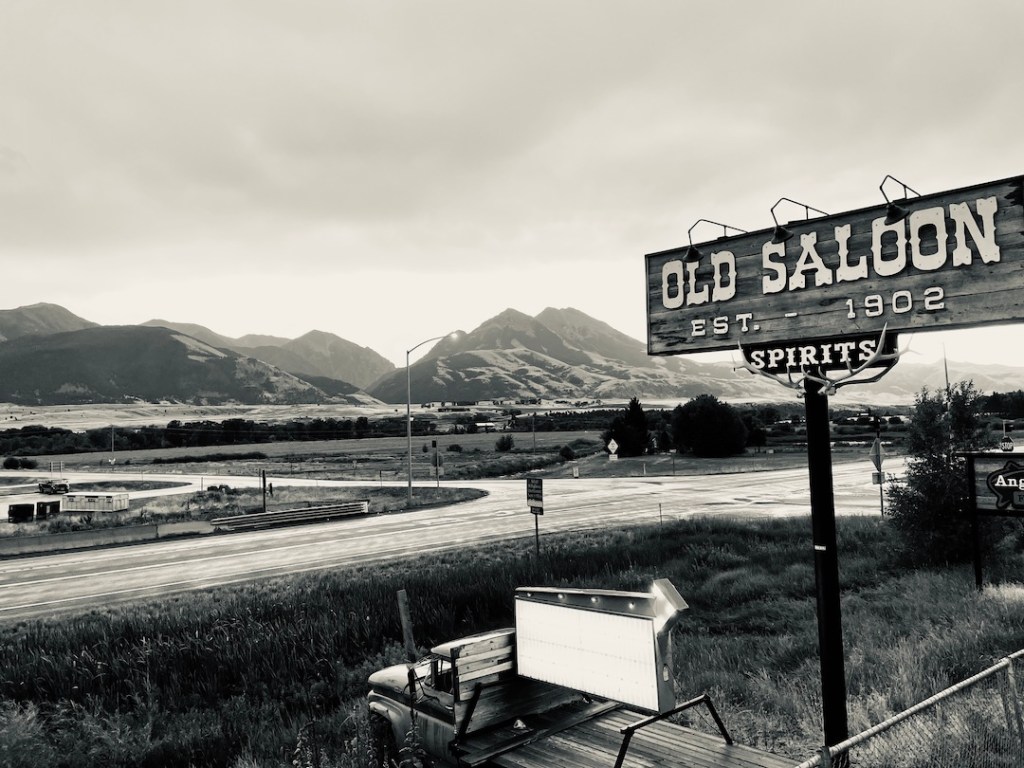
The following evening, our last in Montana, we’re invited to an outdoor concert at the Old Saloon in Emigrant, a dot on the map halfway between Livingston and Gardiner. W.C. Huntley, a South Carolinian who now lives in Montana, is playing his usual set of twangy, old-fashioned covers and originals. I’m told he comes from a family of professionals: doctors and lawyers, mostly. But W.C. can’t quit the old-timey music, knowing perfectly well he’ll never get rich chasing his dream. He’s compact in size but charismatic, with a strong tenor voice and a confident picking style.
In Emigrant tonight it’s drizzling on and off, so most of the saloon patrons are indoors, whooping it up around the bar and taking turns at the two pool tables. The die-hards are outside, in freshly pressed jeans and pale cowboy hats, belt buckles glinting under the stage lights. The appointed bouncer, a baby-faced carpenter by trade, chats with us, “Sirs” and “Ma’ams” softening every sentence.
Under the spitting rain, with the wind whipping down from the Absaroka range, a bearded rancher in heavy boots rises from a picnic table with his girl and, with uncommon dignity and grace, leads her round the dance floor. Soon they’re joined by others, and it’s a beautiful thing to see.
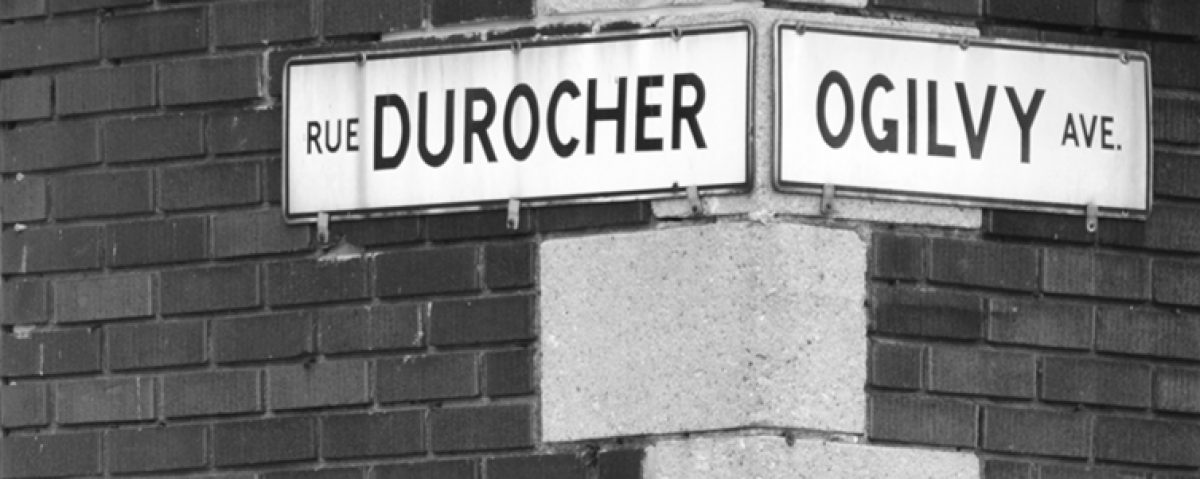
Thank You Spyro for taking me on your journey..
You have absolutley transported me back in time!
Keep writing!
LikeLike
Thanks, Denise. I hope to keep on writing, as you instruct.
LikeLike
Spyro, I hope you and your beautiful wife were on the dance floor too! Thanks for your superb observations.
LikeLike
Alas, Mike, we never got on the dance floor. But I did take a short video of the couple I described, which I hoped to add. Alas, my blog platform doesn’t allow me to that without an expensive upgrade, so I’ll have to leave it to your imagination. Thanks for reading.
LikeLike
Love the vintage signage. Somehow it evokes a simpler time, although I’ll bet that your characters have as much going on as the swamp gal. Oh . . . the middle cloud in the first image looks like a flying baby elephant.
LikeLike
Thanks, Gerry. Simpler times: saw two signs while there — PROTECT OUR CHILDREN. VOTE REPUBLICAN, to be followed by PROTECT OUR GUNS. VOTE REPUBLICAN. I’m beginning to see a pattern…
LikeLike
Back from vacation and finally got to this last Montana instalment. Laughed out loud with great pleasure, and possibly a touch of schadenfreude, at “It’s so bad” referring to that dreadful and hugely successful Where the Crawdads Sing (unlike you I wasn’t stuck in a cabin and tossed it aside, albeit too far in, not wanting to give up hope). Thanks for your delightful take. It drives me crazy, the formulaic dreck that passes for excellence in novels these days. If you haven’t yet read German writer Jenny Erpenbeck, do.
Other bits of your tale made me laugh and I warmed to your lovely descriptive prose and sweet ending. One question lingers: how was the cheeseburger?
LikeLike
So glad, Jane, that I made you laugh, and that it was audible. The less said about the Swamp Girl, the better. I am now reading a fantastic book, also by accident: Mrs. Osmond, by John Banville. Can’t say enough about it. It continues Henry James’s Portrait of a Lady, which takes a lot of guts, and maybe arrogance, to attempt. To your last question: the hamburger was fine, but it could never match the excitement of seeing this place for the first time.
LikeLike
And, by the way, glad you’re reading and commenting. Hi to Sami.
LikeLike